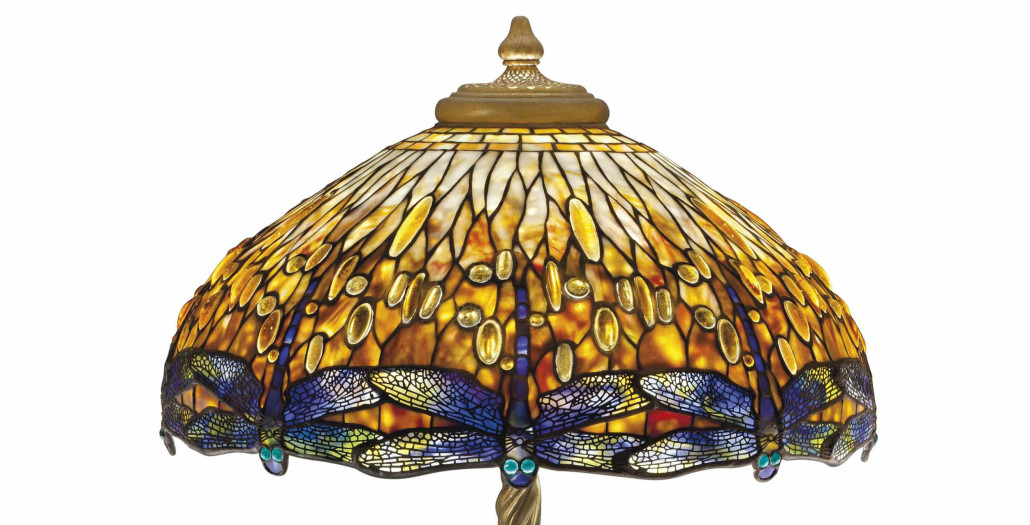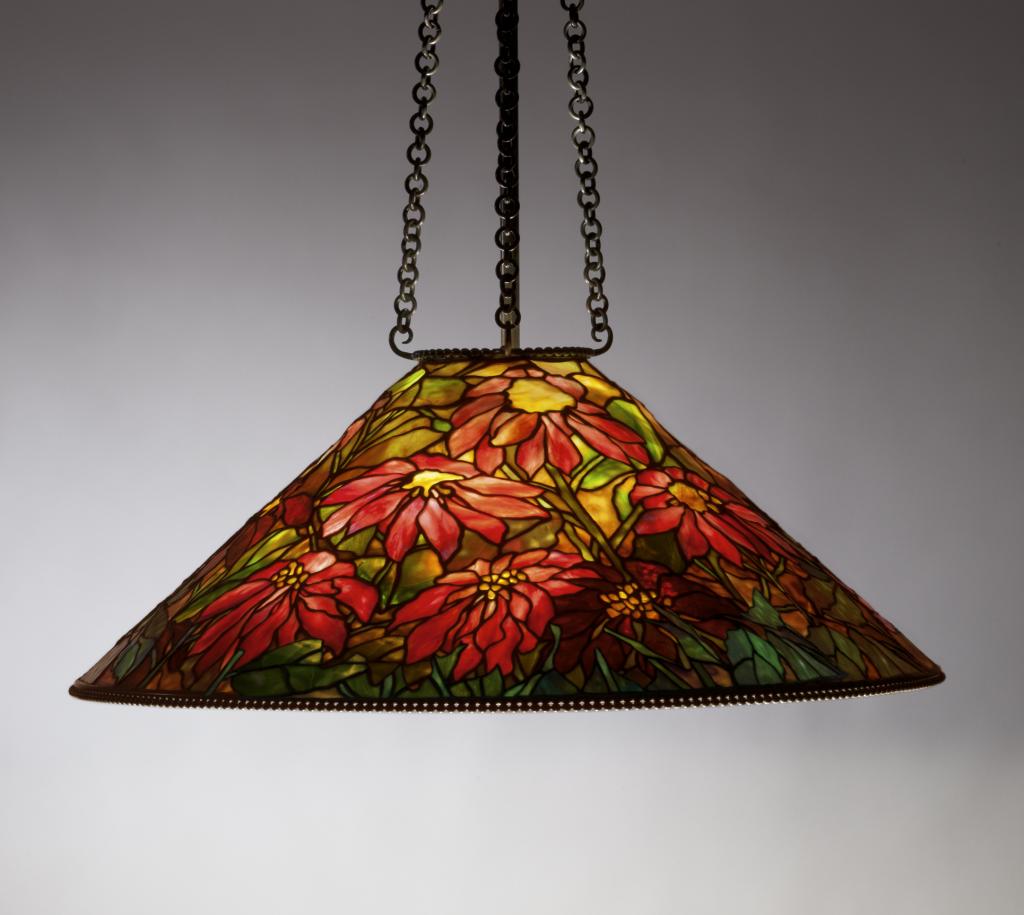[av_textblock size=” font_color=” color=” av-medium-font-size=” av-small-font-size=” av-mini-font-size=” admin_preview_bg=”]

Tiffany lamps are magical artifacts in the collecting world. Illuminate one, and all the creative passion that went into its conception electrifies the viewer today.
“Tiffany is something that is so extraordinary in its beauty and its value – it will always be very popular. Whenever there is a downturn in the market, it comes back stronger than ever before,” said Allen Michaan, whose Michaan’s Auctions sold one of the world’s premier collections in 2012. “The glass is tremendous – unrivaled anywhere – amazing stuff.”
Louis Comfort Tiffany (1848-1933), son of the founder of Tiffany & Co., was determined to be a painter. A turning point came in the 1870s when L.C. Tiffany became fascinated with the properties of glass, an interest that he expressed in architectural windows, glass-shaded lamps and formulas for art glass.
Tiffany’s first lamps were made in the late 1890s. In 1902, he named his multi-branched firm Tiffany Studios, while he also served as design director for the family Tiffany & Co. brand.
While Tiffany designed some lamps himself, he employed many talented artists including Clara Driscoll, creator of the popular Dragonfly designs and head of his Women’s Glass Cutting Department.
Although out of style by the time Tiffany died in 1933, the lamps almost immediately began a climb back into fashion driven by serious dealers and collectors.
[/av_textblock]
[av_hr class=’invisible’ height=’20’ shadow=’no-shadow’ position=’center’ custom_border=’av-border-thin’ custom_width=’50px’ custom_border_color=” custom_margin_top=’30px’ custom_margin_bottom=’30px’ icon_select=’yes’ custom_icon_color=” icon=’ue808′ font=’entypo-fontello’]
[av_button label=’Click to view Tiffany Lamps you can bid on right now’ link=’manually,https://www.liveauctioneers.com/search?q=tiffany+lamp&hasimage=true’ link_target=’_blank’ size=’medium’ position=’center’ icon_select=’no’ icon=’ue800′ font=’entypo-fontello’ color=’theme-color’ custom_bg=’#444444′ custom_font=’#ffffff’]
[av_hr class=’invisible’ height=’20’ shadow=’no-shadow’ position=’center’ custom_border=’av-border-thin’ custom_width=’50px’ custom_border_color=” custom_margin_top=’30px’ custom_margin_bottom=’30px’ icon_select=’yes’ custom_icon_color=” icon=’ue808′ font=’entypo-fontello’]
[av_textblock size=” font_color=” color=” av-desktop-hide=” av-medium-hide=” av-small-hide=” av-mini-hide=” av-medium-font-size=” av-small-font-size=” av-mini-font-size=”]

[/av_textblock]
[av_hr class=’invisible’ height=’20’ shadow=’no-shadow’ position=’center’ custom_border=’av-border-thin’ custom_width=’50px’ custom_border_color=” custom_margin_top=’30px’ custom_margin_bottom=’30px’ icon_select=’yes’ custom_icon_color=” icon=’ue808′ font=’entypo-fontello’]
[av_textblock size=” font_color=” color=” av-desktop-hide=” av-medium-hide=” av-small-hide=” av-mini-hide=” av-medium-font-size=” av-small-font-size=” av-mini-font-size=”]

[/av_textblock]

